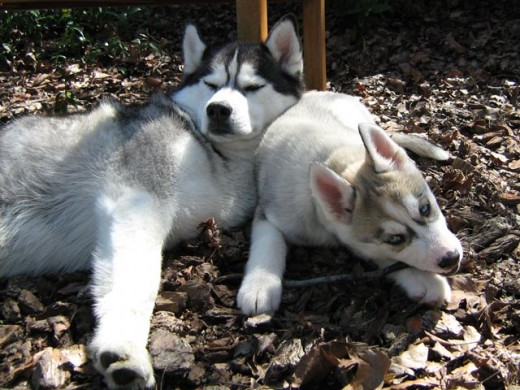It is an exciting time!
You are looking for a new dog or puppy to share your life with. You can’t wait to get one, but …
How to get a cheap dog that will fit with our budget?
There are generally four places where we can get a dog or puppy –

The first step in “how to get a dog” is to decide on a dog breed. Do some research on popular dog breeds and find one that is right for our family and current lifestyle.
Dogs have a lot of bad habits, so think carefully before getting one.
How to Get a Dog 1


Accredited Dog Breeder
These are dog breeders that are registered with an accredited organization such as-
- American Kennel Club (AKC),
- The Kennel Club UK, or
- Canadian Kennel Club (CKC).
Each club has a section that lets us search for dog breeders that are registered with them. These breeders have to follow rules of conduct set by the club, and are frequently active participants in showing their dogs in club events.
Accredited dog breeders tend to breed healthy puppies, whose parents have been screened for hereditary issues. They will usually socialize their puppies early-on because that will help with subsequent conformation competitions. Many will also breed for good puppy temperament.
As a result, dogs from such breeders end up having fewer vet and puppy training bills.
Even though puppies from accredited breeders may not be cheap at first glance, they actually end up being cheaper dogs in the long-run because of their good health and temperament.
These puppies usually sell for about $800 to $2000, for the breeds that are more rare.


Some things to look for from a good dog breeder:
A good dog breeder …
- Will want to meet with you, or interview you over the phone, before selling one of her precious puppies. The more questions the breeder asks the better, because that shows she cares what kind of home the puppy is moving to.
- Will show you the mother and father (if available) of the puppies, and let you interact with them. The temperament of the parents will affect the temperament of the puppies.
- Will breed from champion bloodlines, and provide you with the puppy’s “family tree” that will contain many champions.
- Will have proper health certifications for the puppies’ parents. This will vary by breed, as different breeds may have different hereditary or genetic issues.
- Will give you some kibble, a blanket that smells like the litter, sometimes a crate, and the puppy’s favorite toy. This will make the transition of homes easier for the puppy. The kibble and smelly blanket are especially important.
- Will not over-breed their dogs. It is expensive and time consuming to properly care for a litter of puppies, so accredited breeders do not breed very often. Places that have litters every month or every other month, are likely puppy mills that are trying to generate as many puppies as possible to maximize profits.
If possible, it is a good idea to get our puppy from a local breeder. Someone local can hook us up with nearby club activities, and will also be available to give us puppy training advice. My breeder also visits me from time to time, and we get to set up some fun play sessions with her dogs.

How to Get a Dog 2


Backyard Dog Breeder
Unlike accredited dog breeders, backyard breeders do not need to follow any rules of conduct and are usually less experienced.
Backyard dog breeders tend to be –
- Hobbyists who are experimenting with dog breeding,
- Dog owners who get accidental litters, or
- People who are looking for some supplemental income.
As a result, they are less careful about health, temperament, and socialization of their puppies.
Backyard puppies may have genetic defects, unsound temperament, and may be skittish around other dogs or people. This may ultimately lead to dog aggression.
Most of the puppies advertised in online buy-a-puppy sites (e.g. www.puppyfind.com) are from backyard dog breeders or puppy mills. Accredited dog breeders spend the time to seek out good dog owners from their club connections, and rarely, if ever, advertise on these sites.
Getting an online puppy may be quicker and more convenient, but they are more likely to have health and temperament issues.
In the long-run, backyard breeder puppies will end up costing us more in terms of time, money, and heartache.
Puppies from online sites range from about $100 to $1000, with an additional $200-$300 if shipping is necessary.

How to Get a Dog 3
Pet Store
Good dog breeders who breed healthy and balanced puppies will never place their dogs in a pet store to be sold. This is because they care about their puppies very much, and take a very active and hands-on role in placing their dogs into good homes. They often establish a long term relationship with their puppies’ owners, and regularly check up on how their dogs are doing for their entire lives.
Pet stores have very little quality control on how their puppies are treated while at the store. Pet stores also do not screen who they sell their puppies to.
Most, if not all of the puppies in pet stores, come from backyard breeders or puppy mills.
Puppy mills are only interested in making as much money as possible. Their dogs are often treated cruelly, and are kept in small and dirty cages for their entire lives. They are not handled, groomed, or exercised. As a result, pet store puppies commonly have a lot of health issues, inherited genetic issues, as well as serious temperament issues.
If you love dogs, DO NOT get a puppy from the pet store as that will only support the cruel puppy mills behind them.

How to Get a Dog 4
Dog Adoption Agency and Dog Shelter
These are dogs that have been surrendered, seized, or abandoned by their owners. To adopt a dog in need, we may go to a nearby SPCA, city-run animal shelter, or a dog rescue group.
City Shelter
City shelters are usually underfunded and undermanned. To keep their dog population to a manageable size, dogs that are unclaimed and not adopted after a short period of time, are usually euthanized.
City shelter dogs are examined for health and temperament by staff, before they are put up for adoption. In addition, shelter dogs are spayed or neutered, and are up to date on their shots.
If we are looking for a cheap dog, consider that these health procedures more than pay back for the initial adoption fees.
City shelters have adoption fees that range from $50-$100.


SPCA
SPCAs (Society for the Prevention of Cruelty to Animals) are privately funded, non-profit organizations.
They are better financed than city shelters, and usually have a no-kill policy. Most SPCAs get their dogs from surrounding city shelters. They temperament test all available dogs, and choose the ones that are healthy and most adoptable. They may also accept owner surrendered dogs, but only after the dog passes a temperament test. As a result, dogs at the SPCA are usually healthy and have good temperaments.
I used to visit my local SPCA for dog-to-dog socialization sessions. Almost all the dogs I met there were very playful, well socialized, and friendly to people, as well as other dogs.
If we are looking for a cheap, well-temperamented dog or puppy, our local SPCA may be one of the best places to find a furry friend.
SPCAs have adoption fees that range from $100-$300. Most SPCAs will also throw in a free dog obedience training class, and many give adopted dogs a big discount in subsequent training courses.

Rescue Group
Rescue groups are privately funded, non-profit organizations, with a particular mission.
For example, there are a variety of rescue groups that are devoted to saving dogs of a chosen breed. Other rescue groups may be devoted to special needs dogs, old dogs, retired racing dogs, dogs in dire need, etc.
Rescue groups will often take-in dogs that are about to be euthanized at the shelter. Most rescue groups have less stringent temperament tests than SPCAs or city shelters.
As a result, dogs from rescue groups may vary more widely in terms of temperament.
However, many rescue group volunteers will spend time to foster, train, and rehabilitate problem dogs, before adopting them out.
Adoption fees range from $100-$400.

How to Get a Cheap Dog or Puppy?

While considering where to get a cheap dog or puppy, it is important to factor in the costs for the entire life of the dog, rather than just the initial cost of getting the puppy. What we pay for in terms of food, toys, vet bills, and training classes will far outweigh the initial purchase or adoption fee.
A healthy and well-adjusted puppy from an accredited breeder or dog adoption facility, will have cheaper and fewer vet visits, as well as require fewer training classes.
- Vet visits range from a minimum of about $40 for an examination, to about $100 or more if medication is needed. Another $100+ may be required if the dog needs to be sedated for an examination.
- Training classes range from about $80 to $150, and usually last for 4-8 weeks. Private training sessions range from about $80 to over $100 per hour.
At the very least, a puppy with good temperament will save us $100+ per vet visit because he does not have to be sedated for an examination. When we add in the cost of extra training, and possible property destruction from a less carefully bred puppy, we are looking at many thousands of dollars more throughout the dog’s lifetime.
This does not even take into account the cost of emotional distress to us and our family, from an unhealthy, and unbalanced puppy.
In the long-term, cheap puppies come from accredited dog breeders, or our local SPCA, because they are healthy and have good temperaments.

Getting a Dog or Puppy Does Not Always Mean Buying One
Owning a dog is expensive.
The initial cost of shots and spaying or neutering can add up to about $500-$1000 in just the first few months.
Add to that the cost of dog food, dog medicine (Heartguard), dog toys, obedience training, vet visits, and yearly booster vaccine shots, and we are looking at a yearly cost of over $1000 just for maintaining the dog.
Getting a puppy or a dog is a lifelong commitment.
Consider carefully before taking on the responsibility of caring for another precious life. If we want a dog but do not have the time or financial resources at the present moment, there are other ways to spend quality time with a canine friend.
- Volunteer at our local SPCA or a nearby rescue group.
- Get to know our neighbors who have dogs, and volunteer to help them walk their dogs. We may even start charging them a nominal fee for our services.
- Get a part-time job as a pet sitter, or at a dog training facility once we are more comfortable with dogs.

need to find a puppy in my area which is in killeen texas
i will love a puppie
I will love a new blossom puppy
I want a Labrador puppy & my budget is 5000Rs
For those interested in Huskies, they are beautiful and amazing but can be a real handful! They are bred to run 30 miles a day, and eat a little chunk of frozen fish. Obviously they are not your normal pet, realize they are really semi-wild and will never stay unless always confined or on a leash – large dog parks required if off-leash – they will run far far away. So think long and hard before getting one – not many have blue eyes, and may be bred for blue eyes so be careful. I have 2 and mine are outdoor dogs. Summer can be tough (need to contact cool,cool earth in a large patch of shade under a deck or somewhere like that) but winter is the normal environment for them.
I am looking for a Pomeranian or yorkie . I don’t mind if its not a puppy
Is a multi poo a good apartment dog and what do you think about the breed
My last two dogs were you little Yorkies I love them dearly the one before was a Lhasa apso I would be willing to look for a Lhasa a Yorky or any fluffy little ball of the dog that a 72-year-old widow could be responsible for in her apartment.
Hello Diana,
Have you looked at petfinder.com? It is a great way to look for local adoptable dogs. You can specify breed, age, etc.
https://www.petfinder.com/
I also removed your phone number as posting it in a public page may result in crank calls or worse.
my dog was a bull dog he is very nice
I want a sweet puppy of cost 1000 to 2000
Love your website, especially everything about Shiba Inus. We have two Shiba Inus- got them from good breeders as puppies. They are now 17 and 15 years old. Everything I’ve read here about Shibas rings true, and is great advice for Shiba owners. My two are both very opinionated, but so much fun! One is anxious and nervous, barks a lot, lives for food and tries to dominate her “brother” and her human family, the other is calm, not all that interested in food, hardly ever barks, and self-sufficient. He’s a buddha of a dog- emanating peace.
Both Shiba Inus, but so different.
Thanks for you advice, reports, pictures and training tips!
Anke
Wow! 15 and 17 are amazing! Have you had any health issues with yours as they got older? Sephy is almost 9 and he recently developed some spinal/back issues.
Big hugs to your two.
Shibashake- responding to your question about health issues. The 17 year old one (Tokimo) has a loose patella on two of his legs, but it has not affected him, so we did not have any surgery done. He broke his leg a number of years ago, when he was younger. The vet said that it was just unlucky- he was playing with our sun, jumping up, and landing in a twisting motion. With old age he developed vestibular disease- that was when he was 16. That was traumatic for him, and the whole family, because he was stumbling around, bumping into things, being restless and very uncomfortable. It took about 2 weeks until he got used to his world constantly turning around him (that’s what it feel like for him, like severe vertigo). Later last year he had the same problem on his other side. Now he’s ok, but not as stable as before. Tokimo also is senile. He does not understand being on the leash any more. He cannot find his way back home, gets distracted and follows anybody walking by, but that’s just old age. Oh, and Tokimo cannot hear any more. He understands some signing.
The 15 year old female (Takashi) is much more alert and intentional. She can hear (but less well), and so far has no age-related infirmities. Of course she sleeps a lot. Takashi started having allergies when she was 2. We experimented with her food, but nothing helped. She scratched her face until it was inflamed and getting infected, and she got a steroid shot to stop the scratching and allow the face to heal. After that episode our vet suggested that she get very small amounts of steroid when she needs it. We try to minimize the dose, and give her 1/4 of a tablet every two days or so, That keeps the allergy in check. Takashi also had bladder stones, and had to have surgery to remove them. Now she has to eat a special diet (kibble) that prevents these stones from forming. Too bad, because she loves food and we used to feed both dogs raw chicken wings regularly, and they loooooved that!
As you see I go on and on about our shibas…
Thanks for asking.
9 years is NOT old!
Thanks for letting us know some of the things to look out for. Big hugs to Tokimo and Takashi.
I love dogs it I don’t have one I will be happy to have one